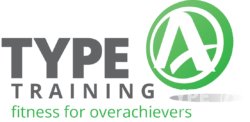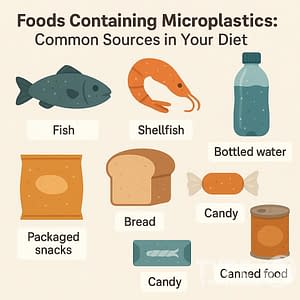Tracking your muscle gain journey can sometimes feel like navigating without a map. Many fitness folks focus only on weight changes, missing other valuable signs of progress.
You can expect to gain between 0.25% to 0.5% of your bodyweight per week when building muscle effectively, but that’s just one of many things worth watching.

Beyond the scale, your body sends out plenty of signals that your training is actually working. From better strength performance to visible changes and recovery capacity, knowing these metrics gives you a much fuller picture of what’s really happening.
Popular posts:
Some indicators show up right away, while others take weeks or months as your body adapts to your training.
Key Takeaways
- Beginners might gain 10-12kg of muscle mass per year (about 1% monthly), while intermediate lifters usually get 5-6kg yearly (around 0.7% monthly).
- Tracking more than just weight—like strength, visual changes, and recovery—gives you a more honest view of your muscle-building progress.
- Muscle growth is slow and steady, so keep an eye on both your performance and body composition, using methods like DEXA scans for accuracy.
Understanding Muscle Gain Metrics

To track your muscle-building journey, you need reliable ways to measure if your gym time is paying off. These metrics help you tweak your training and nutrition if needed.
What Are Muscle Gain Metrics?
Muscle gain metrics are just measurable signs that show how you’re doing at building muscle and strength. Weight is the main thing people track for muscle growth, but honestly, it shouldn’t be your only focus.
The most effective metrics include:
- Body weight changes: Aim for 0.25-0.5% increase in body weight per week for optimal muscle growth
- Strength improvements: Track the weight lifted in key exercises
- Body measurements: Measure chest, arms, thighs, and other body parts monthly
- Body composition: Monitor muscle-to-fat ratio using methods like DEXA scans
- Visual progress: Take photos in consistent lighting and poses
These metrics work together to show the real story. If one stalls, others might still move up.
Why Tracking Progress Matters
Tracking your progress is crucial—not just for results, but for your motivation too. If you don’t measure, how do you know if your program is working?
By tracking, you can:
- Spot plateaus before they get frustrating
- Adjust your nutrition based on your body’s response
- Make smarter decisions about training and eating
- Implement progressive overload by gradually increasing weights
- Stay motivated by seeing proof that you’re making progress
Even small improvements count. Beginners can gain 4-9 pounds of lean mass in 12 weeks with the right training, diet, and sleep. Usually, you’ll see the first visual changes around weeks 4-6.
Muscle Mass Changes
Tracking changes in your muscle mass gives you hard proof of progress. Different methods offer different accuracy—some high-tech, some just a tape measure and a bit of patience.
DEXA Scans
DEXA (Dual-Energy X-ray Absorptiometry) scans are basically the gold standard for body composition. These scans measure your muscle mass, fat, and bone density with pretty tiny margins of error.
DEXA can spot small changes in muscle that other methods might totally miss. That’s especially useful when changes aren’t visible yet.
But DEXA isn’t cheap or super accessible. You’ll need an appointment at a clinic, and scans usually run $50-200 each. Most people just get them every 3-6 months, not every week.
Tape Measurements
Measuring with a tape is practical and surprisingly effective. Focus on spots like your chest, shoulders, arms, thighs, and calves.
For accurate measurements:
- Measure at the same time of day
- Use the same body positions
- Mark measurement spots with a pen
- Have the same person do it, if possible
- Don’t pull the tape too tight
The “right tape measurements” can show growth in specific muscles even if the scale doesn’t budge. That helps you tell muscle gain from fat loss.
Take these measurements every 2-4 weeks. Jot them down in a spreadsheet or fitness app so you can actually see the trend.
Scale Weight
Your bathroom scale gives you some info, but it’s not the full story. As you gain muscle, you should see your weight go up gradually.
Most people gain muscle at about 0.25-0.5 pounds per week. If it’s faster, you might be adding fat too.
Scale weight bounces around daily because of things like:
- Water retention
- Food still in your system
- Glycogen storage
- Time of day
Weigh yourself under the same conditions—ideally first thing in the morning after the bathroom. Track weekly averages, not just daily numbers, to see the real trend.
Visual and Physical Indicators
Your body gives you plenty of clues that your strength training is working. Visual changes and how your clothes fit are real-world signs of muscle growth and fat loss.
Mirror Progress
The mirror doesn’t really lie. Check for more definition in muscles—shoulders, arms, legs—when you look at yourself.
Morning is best for this, before you start holding onto extra water. Take weekly photos in the same spot, with the same lighting and pose, so you can actually compare.
Honestly, a lot of people see changes in the mirror before the tape measure moves. That’s because muscle is denser than fat, so you look more defined even if your weight hasn’t changed.
Pro tip: Make a photo journal—front, side, back—once a week to really track your progress.
Muscle Size Increase
Muscle growth is slow, but if you’re consistent, you’ll start to notice. Key spots to watch:
- Arms: Biceps and triceps usually grow first
- Shoulders: Look for broader, more defined delts
- Chest: Pecs get fuller
- Legs: Quads and hamstrings show more shape
Measure these areas monthly with a tape. Write down the numbers so you can actually see the changes. If your measurements and strength both go up, you’re definitely gaining muscle.
For beginners, muscle gains usually run 1-2 pounds a month, and less for experienced lifters. Patience is key here.
Clothing Fit
How your clothes fit is surprisingly honest. Shirts might feel tighter in the chest, shoulders, and arms, but maybe looser at the waist.
Pants can get snug around your thighs and glutes, but easier to button at the waist. That’s a sign you’re building muscle and maybe losing fat at the same time.
Watch for:
- Button-ups tighter across the back
- Sleeves hugging your biceps more
- Pants fitting differently in the thighs
- Belts needing extra holes even if you weigh more
These changes can show up even if the scale goes up, which usually means your gains are mostly muscle, not fat.
Strength and Performance Metrics
Watching your strength and performance metrics gives you a clear sense of progress. These numbers show how your body’s reacting to your training and help you plan your next steps.
Strength Gains
Strength gains are one of the most reliable signs that your muscles are actually growing. If you can lift heavier weights than before, that’s a pretty good clue that you’re getting stronger and bigger.
Track these key strength metrics:
- One-rep max (1RM): The most weight you can lift for a single rep
- Five-rep max (5RM): The most you can handle for five reps
- Body-weight ratios: How much you can lift compared to your own weight
For big lifts like squats, deadlifts, and bench presses, try to bump up your numbers over time. Many folks aim to deadlift about 1.5 times their body weight for several reps as a solid benchmark.
Progress isn’t always smooth or predictable. You’ll probably hit plateaus and then suddenly jump ahead—it’s rarely a straight line.
Improved Training Volume
Training volume is just the total work you do in a session. It’s sets × reps × weight, and honestly, it’s a key metric if you want to keep making gains.
You can increase volume in a few ways:
- Add more sets to your workout
- Do more reps with the same weight
- Use heavier weights for the same sets and reps
Your muscles react to the total stress you put them through. If your training volume goes up over time, your muscles have to adapt and grow.
Try tracking your weekly volume for each major muscle group. That way, you can spot imbalances and avoid hammering the same muscles too much. Some lifters bump their training volume by 5-10% every month or so—doesn’t sound like much, but it adds up.
Progressive Overload Achievements
Progressive overload is just a fancy way of saying you keep making your workouts harder. It’s the main reason muscles grow and one of the most effective tricks for strength gains.
Here’s how you can measure progressive overload:
- Weight progression: Use heavier weights
- Rep progression: Squeeze out more reps with the same weight
- Set progression: Add extra sets at the same weight and reps
- Density progression: Finish your workout faster
Write down every win in your training log. If you swap your 25-pound dumbbells for 30s on shoulder presses, that’s worth a little celebration.
Set some overload goals. Maybe add 5 pounds to your bench every couple of weeks, or try for an extra pull-up each session. Tiny steps, but they add up.
Body Fat Percentage and Lean Mass
Tracking your body composition tells you way more than the scale ever could. Knowing how fat and muscle interact helps you tweak your training and diet for even better results.
Body Fat Percentage Changes
Body fat percentage really matters for muscle growth. If your body fat gets too high (over 20% for men or 30% for women), it actually gets harder to put on lean mass efficiently.
Higher body fat can lead to worse muscle-to-fat gain ratios when you’re eating in a surplus. The sweet spot for muscle growth seems to be 10-15% for men and 20-25% for women. In those zones, your hormones usually work in your favor.
Your starting body fat percentage changes how your gains split up. Someone at 15% body fat might gain 2 pounds of muscle for every pound of fat, while someone at 30% could gain only one pound of muscle for every two pounds of fat.
Lean Mass Improvements
Lean mass is everything in your body that’s not fat—muscle, bones, organs, water. If you want a clearer picture of progress, focus on lean mass changes.
For most guys, gaining 17-18% of your starting lean mass is pretty impressive. Picture a 180-pound man at 15% body fat—he’s got about 153 pounds of lean mass and could maybe add up to 27 pounds of new muscle if he really works at it.
Women usually gain about 14-15% of their starting lean mass. So, a 150-pound woman at 25% body fat has around 112 pounds of lean mass and might put on up to 17 pounds of muscle.
Your genetics, training experience, and nutrition all affect your lean mass potential. Beginners can add lean mass quickly (2-3 pounds a month), but if you’ve been lifting a while, you might see just 0.5-1 pound per month.
Training Quality and Adaptation
Your body reacts to training stress by getting stronger. How you set up your workouts makes a big difference, and intensity plus frequency are probably the two factors that move the needle most.
Training Intensity
Intensity is about how hard you push, usually measured as a percent of your one-rep max (1RM). For best results, try to train between 60-85% of your 1RM—that usually means sets of 6-12 reps.
Beginners can get results with lighter weights, but if you’re more advanced, you’ll have to go heavier. Pay attention to how you feel, too—finish most sets thinking you could only do one or two more reps with good form.
Keep pushing for progressive overload. If you don’t, your muscles won’t have a reason to get bigger or stronger.
Workout Frequency
Workout frequency is just how often you train each muscle group per week. The research says about 10 solid sets per muscle group weekly works well for most people.
You can split those sets up however you like:
- Full-body workouts: 3-4 times a week, 2-4 sets per muscle each session
- Upper/lower split: 4 times a week, lets you add more volume per muscle
- Push/pull/legs: 6 times a week, for high frequency and volume
Your experience level matters here. Beginners usually do well with full-body routines three times a week, while advanced lifters might like splits for more focus and recovery.
Don’t forget about rest. Most muscles need 2-3 days to recover before you hit them hard again.
Biological and Individual Influences
Your muscle-building journey depends a lot on things you can’t really change. These biological factors set the stage for how fast and easily you can gain muscle, no matter how hard you train or how dialed-in your diet is.
Genetic Potential
Genetics play a huge role in your muscle-building ceiling. Your genetic makeup affects muscle fiber types, hormones, and how your body reacts to training.
Some folks have more fast-twitch fibers, which bulk up faster than slow-twitch ones. Lucky them, right?
Body type matters too. If you’re an ectomorph (naturally skinny with small joints), gaining muscle will probably be tougher than for mesomorphs, who seem to pack on size easily.
Your natural testosterone levels, mostly set by genetics, really impact your growth speed. Higher levels usually mean faster gains.
Comparing yourself to others is a recipe for frustration. You’re better off focusing on your own progress.
Biological Sex Differences
Men and women build muscle differently thanks to hormones. Men have 15-20 times more testosterone, which gives them a big edge for muscle growth.
Women gain muscle more slowly, but they can still get impressively strong. Their bodies also store more fat, which is important for hormone production.
Biological maturity really impacts muscle development. Strength and power ramp up fast until around age 20, with testosterone peaking in the late teens and early twenties for guys.
Women often see more balanced muscle development overall, and might even outperform men in lower-body strength compared to their upper body.
Both men and women benefit from resistance training, but it’s smart to set expectations based on your sex.
Nutritional Factors
Nutrition has a direct impact on muscle growth and strength. How you fuel up plays a huge role in how well you build new muscle and recover after tough workouts.
Protein Intake
Protein’s the foundation for muscle tissue. To really make progress, you’ll want to get in 0.7-1 gram of protein per pound of body weight daily.
That usually ends up being about 20-35% of your total calories.
Quality counts, not just the numbers. Try to stick with complete protein sources like:
- Lean meats (chicken, turkey, lean beef)
- Fish and seafood
- Eggs
- Dairy products
- Plant-based options (tofu, tempeh, legumes)
When you eat protein matters, too. If you can, get some protein in within half an hour after your workout—it helps kickstart recovery.
Spread your protein across meals so your muscles always have amino acids to work with. That way, your body won’t start breaking down muscle for fuel.
Caloric Surplus
Muscle building needs more energy than you burn. A daily surplus of 250-500 calories gives your body the extra push it needs to grow muscle without packing on too much fat.
How much you need depends on a bunch of things:
- Current weight
- Activity level
- Metabolic rate
- Training intensity
Carbs should make up 45-65% of your daily calories to keep your workouts fueled and refill your energy stores. Healthy fats (20-35% of calories) help with hormone production, especially testosterone—which, let’s be real, is pretty important for muscle growth.
Tracking your food for a bit helps you hit your targets. Adjust the surplus if you’re not seeing muscle gains, or cut back if you notice too much fat creeping in.
Hydration and Recovery
Water isn’t just a side note—it’s huge for muscle growth. Staying hydrated helps nutrients move around your body, keeps your training on point, and speeds up recovery.
Aim for 0.5-1 ounce of water per pound of body weight every day. If you’re sweating a lot, bump it up. If your urine’s light yellow, you’re doing it right.
Recovery nutrition isn’t only about protein. Pairing carbs with your protein after workouts refills your energy and boosts muscle repair. Slow-digesting proteins and healthy fats before bed can keep amino acids flowing overnight, when your body does most of its repair work.
Supplements can help, too. Creatine monohydrate is well-studied for strength and muscle gains. Omega-3s, vitamin D, and magnesium might also help with recovery—though, honestly, the basics matter most.
Lifestyle and Recovery Metrics
Muscle isn’t built just in the gym. Most of the magic actually happens when you’re resting, assuming you’re giving your body what it needs. Tracking recovery metrics can help you spot what’s working—and what’s not.
Sleep Quality
Sleep is when your muscles repair and grow. Tracking sleep quality gives you real insight into your recovery.
Most trackers break down your sleep stages, including deep sleep (where the growth hormone release happens). Shoot for 7-9 hours of good sleep each night.
Poor sleep can seriously set back your muscle gains. Here are some sleep metrics worth watching:
- Total sleep duration
- Deep sleep percentage
- Sleep continuity (interruptions)
- Sleep schedule consistency
Your own morning “how do I feel?” rating is surprisingly helpful, too. Give your wakeup a 1-5 score and look for trends over time.
If you keep waking up groggy, you might need to tweak your routine or recovery.
Rest Patterns
Resting between workouts lets your body repair and come back stronger. Tracking your rest days helps you figure out your ideal training rhythm.
Rough rest guidelines:
- Large muscle groups: 48-72 hours between training
- Small muscle groups: 24-48 hours between sessions
- Full recovery days: 1-2 per week
Try tracking your morning resting heart rate. If it’s 5+ BPM above your usual, you might not be fully recovered.
Before each workout, rate your readiness from 1-10. If you’re under a 6, consider more rest or a lighter workout. It’s not always worth pushing through.
Stress Management
Stress messes with muscle-building by raising cortisol, which can eat away at muscle. Tracking stress levels helps you catch when stress might be holding you back.
Try keeping tabs on:
- Daily stress ratings (1-10 scale)
- Heart rate variability (HRV) if your tracker supports it
- Weekly stress-busting activities (meditation, walks, whatever works for you)
HRV’s a cool metric—it shows how balanced your nervous system is. Higher HRV usually means you’re recovering well. If it’s always low, you might be overdoing it or just dealing with too much life stress.
Keep a simple stress log and jot down big stressors and how they affect your workouts. You’ll probably notice high-stress weeks line up with slower muscle progress.
Hormonal and Physiological Factors
Your body’s chemistry makes a big difference in how you build muscle. Certain hormones speed things up, and your metabolic health affects how well your body uses food for muscle building.
Testosterone and Hormones
Testosterone drives muscle growth for everyone, though men have more of it. Resistance training boosts testosterone, growth hormone, and IGF-1—all key for muscle repair and growth.
These hormones team up to fix your muscles after a workout. Your testosterone can swing up or down depending on:
- How well you sleep (aim for 7-9 hours)
- Your diet (healthy fats matter)
- Age (yep, it drops over time)
- Stress levels
Hormonal imbalances can really slow your progress. If you’re doing everything right and still not gaining, blood tests might be worth a look.
Insulin Resistance
Insulin helps shuttle nutrients into your muscles. If you develop insulin resistance, your muscles stop listening, making it tough to build muscle and easy to gain fat.
Possible signs insulin resistance is holding you back:
- Struggling to gain muscle despite hard work
- More belly fat than you’d like
- Poor recovery after workouts
- Always hungry or energy crashes
Your diet can improve insulin sensitivity. Focus on:
- Fiber-rich veggies
- Healthy fats
- Plenty of protein
- Cutting back on processed carbs
Research shows keeping insulin sensitivity high is key for muscle growth and performance.
Expectations and Rate of Progress
Knowing how fast you can build muscle sets realistic goals for your fitness journey. Your progress depends a lot on your training background and genetics—sorry, it’s true.
Newbie Gains Versus Advanced Lifters
Beginners see the fastest muscle growth—those “newbie gains” everyone talks about. Usually, you can expect 1-1.5% body weight gain per month for men, a bit less for women.
For a 180-pound guy, that’s about 1.8-2.7 pounds of muscle a month. Women typically gain 60-70% of men’s gains thanks to hormones and starting muscle mass.
If you’ve been training a year or two, progress slows—expect 0.5-1% of body weight in muscle per month.
Advanced lifters (3+ years in) might only add 0.2-0.3% body weight in muscle a month—so, maybe 1-3 kg a year. It’s a grind, but it’s still progress.
Diminishing Returns Over Time
Your muscle-building journey isn’t linear. At first, you make progress quickly, but over time, each new pound of muscle gets tougher to earn.
This slowdown kicks in as you get closer to your genetic limits. Your body’s ceiling depends on a bunch of factors:
- Frame size
- Hormone levels
- Muscle fiber type distribution
- Age
After three to five years of solid training, you’ll notice gains come at a crawl. You might grind for months to see changes that once happened in weeks.
It’s easy to get frustrated, but maybe it’s better to shift your focus. Try tracking more than just size—think strength, technique, or even just showing up week after week.
















